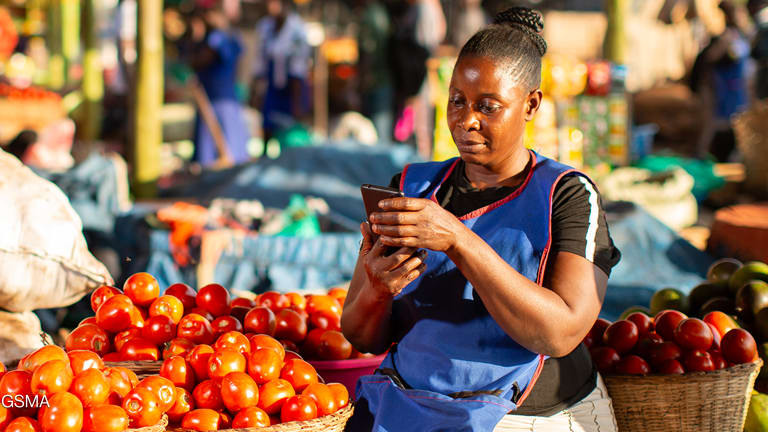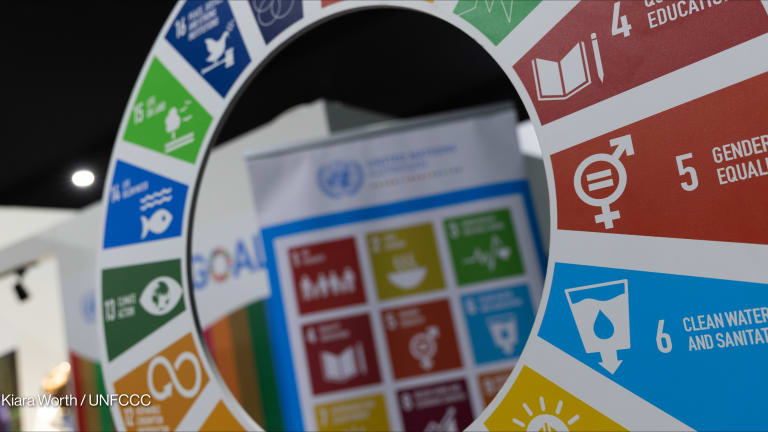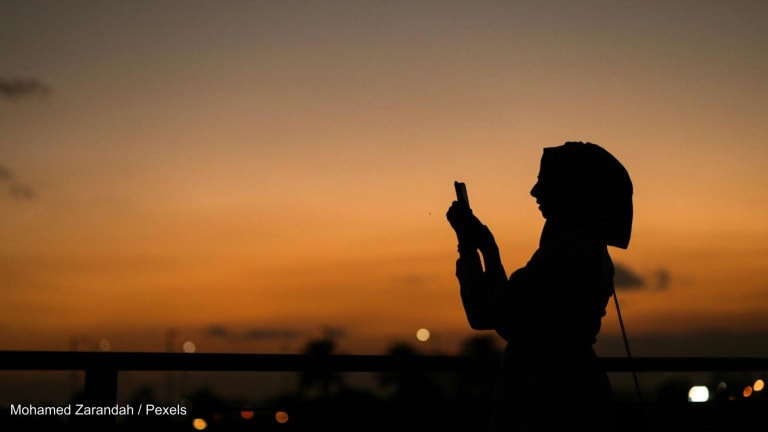
While the internet is becoming more widely available and the costs of use are decreasing, online opportunities remain out of reach for billions of people.
Some 2.7 billion of the world’s 8 billion people don’t have internet access at all, according to a recent report on the state of digital connectivity by the International Telecommunications Union, the United Nations agency for information and communication technologies. While mobile broadband has allowed users to access the internet via smartphones relatively cheaply, cost remains a barrier to access in many places, especially in low-income countries.
“The country we won’t mention that is all over the continent came into the continent because the U.S. left.”
— Cina Lawson, Togo’s digital economy and transformation ministerThe “digital divide” refers to the gap between those who have access to the internet and those who do not. A range of organizations is working to connect the unconnected. They range from small community-based networks developing local solutions for last-mile connectivity to tech giants experimenting with drones and satellites, to advocacy organizations working to raise financing, put together partnerships, and reform policies.
But closing the digital divide remains a challenge. One big reason is there aren’t the same business incentives for the private sector to extend internet access to lower-income or rural areas as there are in higher-income or more densely populated areas. And even when people are connected, they don’t always use the internet because it’s inadequate or unaffordable.
So who remains offline, and why does closing the digital divide require more than connections and devices?
Bringing ‘meaningful connectivity’ to everyone
For the 2.7 billion people who remain offline, key barriers to internet access extend beyond a lack of infrastructure. They include affordability, limited digital literacy, the availability of content that meets their needs and is available in their language, or low social acceptance of internet use.
Even among people who are online, many who have basic access to the internet are not “meaningfully connected.”
Organizations focused on tackling the digital divide are increasingly using that term to account for issues such as connection speeds, quality of content, and data privacy, according to Sonia Jorge, the founder and executive director of the Global Digital Inclusion Partnership, or GDIP. Those who aren’t meaningfully connected might still face such barriers to access.
The organization, which launched last month, is a coalition of public, private, and civil society organizations, including World Bank Group; Meta, the parent company of Facebook; and Smart Africa, a partnership between African countries focused on access to broadband and use of information and communications technologies.
GDIP is focused on bringing meaningful internet connectivity to the global majority without contributing to inequality and exclusion. It does this by advocating for leaders working on digital inclusion to focus on meaningful access in their convenings and policymaking processes, and bringing together partners that are often used to competing with one another together behind this common goal of closing the digital divide.
“We realized we were not actually addressing all of the elements that are important to close this digital divide and address issues around digital inclusion,” said Jorge, who formerly led the Alliance for Affordable Internet. “This mission will enable us to tackle the problem in all of its dimensions.”
The community of organizations working on internet access and usage has to consider multiple dimensions of end users, from age to gender to skills.
“All of these nuances are so important when we talk about digital inclusion, so we aren’t constantly taking one step forward and two steps back,” Jorge said.
For example, girls and women have less access to affordable technology and internet access than boys and men, creating what is called a gender digital divide. GDIP is particularly focused on women and girls, along with rural and marginalized populations.
An opportunity for public-private partnership
One reason it’s so hard to close the digital divide is that it’s risky for private companies to invest in places where gaps in access remain.
Private companies, from mobile network operators to Silicon Valley tech companies, have an interest in connecting the unconnected.
And governments, together with the broader international development community, can play an important role in public-private partnerships that support so called last-mile connectivity. For example, they can “de-risk” investments for private investors to ensure that internet infrastructure extends to the hardest-to-reach communities.
An example is Togo, where internet penetration has gone from less than 5% to 75% over the last 10 years, due in part to investments by groups such as World Bank, which has invested millions to improve the nation’s connectivity and develop its digital economy.
“From 5 to 75, it’s not even another world, it’s another universe,” Cina Lawson, Togo’s minister of digital economy and transformation, said at a recent event hosted by the Center for Strategic and International Studies on digital transformation in sub-Saharan Africa.
Due in large part to that widespread access to the internet, Togo has become a pioneer in precision aid, using a combination of high-tech methods to direct emergency cash transfers to the most vulnerable during the COVID-19 pandemic.
The Pro read:
How machine learning and new data sources can better target aid
The Center for Effective Global Action featured its work in, and learnings from Togo, in a recent event on reimagining development aid, which focused on how to leverage emerging technology to improve targeting.
Lawson called for further investment from the U.S. government, as China invests heavily in digital infrastructure on the African continent.
“The country we won’t mention that is all over the continent came into the continent because the U.S. left,” she said.
Her comments pointed to some of the new questions emerging around the agendas of governments that invest in global internet access. For example, Chinese companies are investing heavily in telecommunication, digital infrastructure, and smartphones in Africa. Some argue this kind of investment comes at a cost — such as in Ethiopia, where critics say the money China loaned the government to update its digital infrastructure was used to monitor telecom network users.
Ensuring no one is left behind
As the COVID-19 pandemic fast-tracked the digitization of services from health care to education, it also highlighted the inequities of internet access and brought a new sense of urgency to efforts to close the digital divide.
For example, students who weren’t online couldn’t access remote learning opportunities, families who lacked affordable devices couldn’t take advantage of telemedicine, and entire communities missed out on the digital solutions that kept so many services running during periods of social distancing.
But experts told Devex the funding has not kept pace with the rhetoric, meaning the world is not on track to reach goals such as the International Telecommunication Union, or ITU, and U.N. secretary general’s roadmap to achieve universal connectivity by 2030.
Internet access is increasing, but not as quickly nor as evenly as it needs to, said Doreen Bogdan-Martin, who will become secretary-general of ITU in 2023, and currently directs its Telecommunication Development Bureau. ITU’s mission is to guarantee that everyone can benefit from digital information, products, and services or, in other words, to bridge the digital divide in an equal and equitable way. So as she steps into the secretary-general role, Bogdan-Martin will be in one of the leading roles working to bring meaningful access to everyone.
“As technologies evolve, there are new opportunities to harness systems that can really change the game for marginalized individuals and populations currently being left behind,” she said in an email to Devex. “We need to work inclusively with local people and communities to ensure content is meaningful to them and available in languages they can understand, and formats they can use — such as voice-driven interfaces where literacy might be an issue. We also need governments, regulators and the industry to work harder in partnership to find new ways to dramatically bring down the cost of internet-enabled devices like smartphones, so that those in lower-income brackets — as well as marginalized groups like women and children — get the chance to connect.”
Bogdan-Martin says the digital divide is not just a technology divide, but an opportunity divide.








